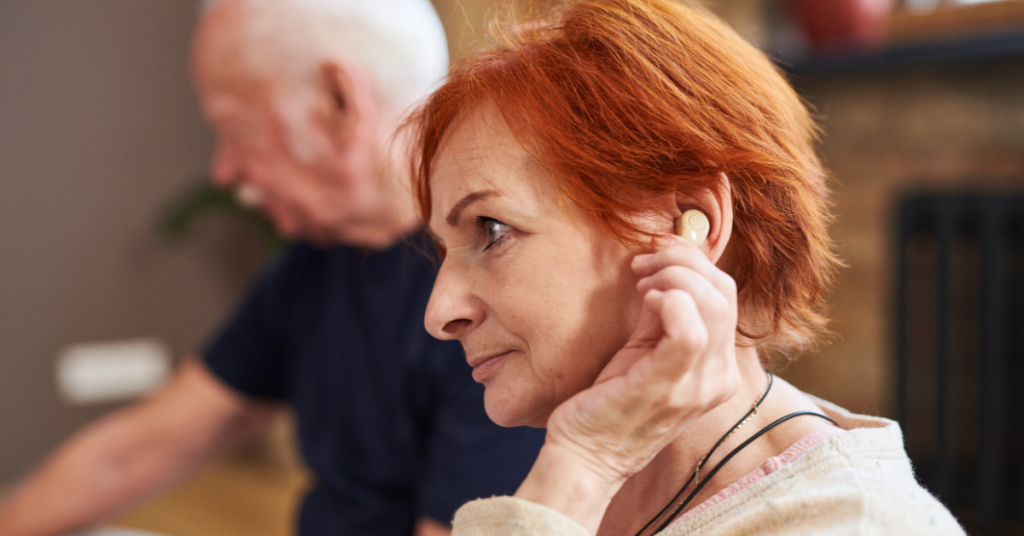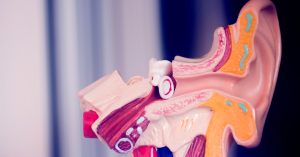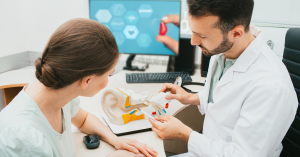Hearing loss is a natural part of aging, but for many, it’s more than just asking someone to repeat themselves now and then. Presbycusis, or age-related hearing loss, is one of the most common chronic conditions affecting older adults. It often progresses so gradually that many people don’t realize how much it’s impacting their lives until communication becomes difficult or frustrating.
Understanding presbycusis is crucial, not just for those experiencing it, but also for their families, friends, and caregivers. Left unaddressed, hearing loss can lead to feelings of isolation, confusion, and even depression. But with the right knowledge and tools, individuals can take control of their hearing health and maintain a high quality of life.
In this article, we’ll explore what presbycusis is, what causes it, how to recognize the symptoms, and what treatment options are available. Whether you’re beginning to notice changes in your hearing or supporting someone who is, this guide will help you better understand and manage age-related hearing loss.
What Is Presbycusis?
Presbycusis is the medical term for the gradual loss of hearing that occurs naturally as people age. It is a sensorineural hearing loss, meaning it results from changes in the inner ear, auditory nerve, or brain pathways that process sound. Most commonly, presbycusis affects the ability to hear high-pitched sounds and makes it harder to understand speech, especially in noisy environments.
Unlike sudden hearing loss caused by injury or illness, presbycusis develops slowly over time. This gradual progression can make it difficult to notice at first. You might find that you can still hear people talking, but their words seem muffled or unclear. Often, people with presbycusis report that they can hear someone speaking but struggle to distinguish specific words or follow conversations in a group setting.
Presbycusis typically affects both ears equally and is considered a bilateral condition. It tends to become more noticeable after the age of 60, although some individuals may begin to experience symptoms earlier, especially if they have a history of noise exposure or other risk factors.
It’s important to note that presbycusis is different from conductive hearing loss, which involves problems in the outer or middle ear, such as earwax buildup or fluid. While conductive hearing loss can often be medically treated or even reversed, presbycusis is usually permanent. However, it can be effectively managed with the right hearing support and lifestyle adjustments.
Understanding presbycusis is the first step toward addressing it. By learning how it works and what to expect, individuals and caregivers can take proactive steps to seek treatment and maintain meaningful connections with others.
Causes and Risk Factors of Age-Related Hearing Loss
Presbycusis doesn’t happen overnight—it’s the result of gradual changes in the ear and auditory system over many years. While aging is the most common cause, several other factors contribute to the development and severity of this type of hearing loss.
Natural Aging of the Ear
As we age, the tiny hair cells in the cochlea (a part of the inner ear) that detect sound vibrations begin to deteriorate. These hair cells do not regenerate, so any damage is permanent. This natural wear and tear is a primary contributor to presbycusis.
Genetic Predisposition
Some people are more genetically susceptible to hearing loss than others. If close family members experienced significant hearing decline with age, you may have a higher risk of developing presbycusis earlier or more severely.
Long-Term Noise Exposure
Cumulative exposure to loud noises—such as music, machinery, or occupational noise—can damage the inner ear over time. Even if the noise exposure occurred decades earlier, the effects can compound with aging to worsen hearing loss.
Medical Conditions
Certain health issues commonly associated with aging can also increase the risk of presbycusis. These include:
- High blood pressure
- Diabetes
- Heart disease
- Ototoxic medications (such as some chemotherapy drugs, antibiotics, and pain relievers)
These conditions can impair blood flow to the inner ear or directly damage auditory structures, accelerating hearing decline.
Lifestyle Factors
Smoking, poor diet, and lack of exercise have been linked to reduced hearing health. Smoking, in particular, can restrict blood flow to the ears, contributing to faster deterioration of hearing ability.
Sex and Ethnicity
Studies have shown that men are more likely to experience presbycusis than women. Additionally, the rate and severity of age-related hearing loss may vary among different ethnic groups due to genetic and environmental factors.
In most cases, presbycusis results from a combination of these factors. While some causes, like genetics and age, are beyond our control, understanding the risks allows individuals to take preventative steps—such as protecting their ears from loud noises and managing chronic health conditions—to help preserve hearing for as long as possible.
Common Symptoms and Early Warning Signs
Presbycusis often develops so gradually that many people don’t realize they’re losing their hearing until it significantly affects their daily life. Recognizing the early symptoms is crucial because timely intervention can help preserve communication skills, maintain independence, and support emotional well-being.
Muffled or Distorted Sounds
One of the earliest and most common symptoms is that speech begins to sound muffled or unclear. You might still hear voices, but words can seem jumbled—especially consonants like “s,” “f,” and “th,” which are high-frequency sounds often affected first by presbycusis.
Difficulty Understanding Speech in Noisy Environments
Restaurants, social gatherings, or places with background noise can become particularly challenging. People with presbycusis often find it hard to separate voices from background sounds, making it frustrating to follow conversations.
Frequently Asking Others to Repeat Themselves
You may find yourself saying “What?” or “Can you say that again?” more often. Others might notice this before you do, which can sometimes lead to misunderstandings or feelings of embarrassment.
Turning Up the Volume
Needing to increase the volume on the TV, radio, or phone to levels that others find too loud is another key indicator. This change is often more noticeable to family members than to the person experiencing hearing loss.
Tinnitus (Ringing in the Ears)
A high-pitched ringing, buzzing, or hissing sound in one or both ears—especially in quiet environments—is a common symptom of presbycusis. Tinnitus doesn’t always indicate hearing loss, but it frequently occurs alongside it.
Withdrawal from Social Situations
When communication becomes difficult, many individuals begin to avoid social interactions. This can lead to increased feelings of isolation, frustration, and even depression, especially for older adults who already face reduced social opportunities.
Fatigue from Listening
Listening with untreated hearing loss can be exhausting. The brain must work harder to fill in the gaps of missed words and sounds, leading to fatigue, especially after long conversations or time spent in noisy environments.
Recognizing these symptoms early allows for timely hearing evaluations and, if needed, interventions like hearing aids or communication strategies. Addressing hearing changes promptly can significantly improve quality of life and reduce the emotional and social impact of hearing loss.
Diagnosis: When and How to Get Tested
Recognizing the signs of presbycusis is only the first step—getting a proper diagnosis is essential to determine the extent of hearing loss and identify the best course of treatment. Fortunately, hearing tests are non-invasive, straightforward, and widely available through audiologists, ENT specialists, and hearing clinics.
When to Seek a Hearing Test
If you or someone you care for has noticed symptoms such as difficulty hearing conversations, needing the TV louder, or frequently asking others to repeat themselves, it’s time to consider a professional hearing assessment. Most experts recommend that adults over age 60 have their hearing checked at least once every 2–3 years, or sooner if changes are noticed.
Early diagnosis is critical not just for managing hearing loss, but also because untreated hearing loss has been linked to cognitive decline, social isolation, and reduced quality of life.
What to Expect During a Hearing Evaluation
A hearing evaluation typically begins with a conversation about your medical history, lifestyle, and specific symptoms. The audiologist or hearing specialist may ask questions like:
- When did you first notice difficulty hearing?
- Is the problem worse in one ear?
- Do you have ringing in your ears (tinnitus)?
- Have you been exposed to loud noises?
From there, a series of tests will be conducted in a soundproof booth, including:
- Pure Tone Audiometry: You’ll wear headphones and press a button whenever you hear a tone. This test measures the softest sounds you can hear at different pitches and volumes.
- Speech Recognition Test: You’ll be asked to repeat words spoken at different volumes to evaluate how well you understand speech, especially in quiet and noisy settings.
- Tympanometry and Acoustic Reflex Tests: These may be performed to assess the function of your eardrum and middle ear, ruling out any conductive components of hearing loss.
Interpreting the Results
Test results are displayed on an audiogram, a graph showing your hearing thresholds at various frequencies. Your audiologist will explain what the results mean and whether you have mild, moderate, severe, or profound hearing loss—and whether it’s consistent with presbycusis.
The Importance of a Baseline Test
Even if you’re not currently experiencing significant symptoms, a baseline hearing test can be incredibly helpful. It establishes a reference point so any future changes can be tracked more accurately.
Getting tested is a proactive and empowering step. Whether it confirms normal hearing or reveals early-stage hearing loss, it opens the door to better hearing health and more informed decisions moving forward.
Treatment Options and Hearing Support
While presbycusis is a permanent form of hearing loss, the good news is that there are many effective ways to manage it. Treatment doesn’t mean reversing the condition, but rather improving your ability to hear and communicate in everyday life. With today’s technology and support strategies, most people with age-related hearing loss can maintain an active, engaged lifestyle.
Hearing Aids
The most common and effective treatment for presbycusis is the use of hearing aids. These small electronic devices amplify sounds and are custom-fitted based on the user’s specific hearing profile.
Modern hearing aids come with features that enhance clarity, reduce background noise, and even connect wirelessly to smartphones, TVs, and other devices. While some people are hesitant to try hearing aids due to stigma or cost, the benefits—such as better communication and increased confidence—are often life-changing.
Assistive Listening Devices (ALDs)
For situations where hearing aids might not be enough, ALDs offer additional help. These include personal amplifiers, TV listening systems, and telephone amplifiers. Some public spaces like theaters and churches also use loop or FM systems to help people with hearing loss follow along more easily.
Cochlear Implants
In cases of severe or profound hearing loss where hearing aids are no longer effective, cochlear implants may be an option. These surgically implanted devices bypass damaged parts of the inner ear and directly stimulate the auditory nerve. They are typically recommended for people who derive little benefit from traditional amplification.
Communication Strategies
In addition to devices, learning practical strategies can make communication much smoother. These include:
- Facing the person you’re speaking with
- Reducing background noise
- Asking others to speak clearly and at a normal pace (not louder)
- Confirming information when necessary
Family members and caregivers should also be educated about these techniques to support better interactions.
Hearing Rehabilitation and Counseling
Hearing loss can affect more than just your ears—it can impact your emotional and social well-being. Hearing rehabilitation programs offer training in listening skills, speech reading (lip reading), and communication strategies. Counseling or support groups can also help individuals and families cope with the emotional aspects of hearing loss.
The Role of Early Intervention
The sooner treatment begins, the better the outcomes. Delaying treatment can lead to further isolation, reduced cognitive engagement, and a decline in mental health. Early use of hearing aids, for example, has been shown to support brain health and reduce the risk of dementia.
By combining technology, communication tools, and emotional support, people with presbycusis can continue to live full, connected lives. Managing hearing loss is not just about hearing better—it’s about staying engaged, independent, and confident.
Coping Strategies and Lifestyle Tips
Living with presbycusis can be challenging, but with the right strategies and mindset, it’s entirely possible to maintain independence, confidence, and a rich social life. In addition to hearing aids and assistive devices, practical lifestyle adjustments and coping mechanisms play a crucial role in managing age-related hearing loss.
Create a Hearing-Friendly Environment
Your surroundings can greatly influence how well you hear and communicate. Consider these adjustments:
- Choose quiet settings for conversations whenever possible.
- Reduce background noise by turning off TVs or music during discussions.
- Use soft furnishings (rugs, curtains, upholstered furniture) to dampen sound reflections and improve acoustics.
Improve Communication Skills
Both the person with hearing loss and their communication partners can benefit from using clearer and more deliberate communication habits:
- Ask people to speak facing you so you can see their lips and facial expressions.
- Request slower—not louder—speech.
- Repeat or rephrase parts of the conversation to confirm understanding.
- Use visual cues and gestures to support spoken language.
Encourage loved ones to avoid talking from another room or turning away during conversations.
Use Technology to Stay Connected
Many tools are available to help those with presbycusis stay connected:
- Captioned phones allow you to read what callers are saying.
- Video calls provide visual cues that help with understanding.
- Hearing aid-compatible smartphones and apps can stream sound directly to your hearing aids.
These technologies not only enhance communication but also help reduce feelings of isolation.
Protect Remaining Hearing
Even if some hearing loss has occurred, it’s important to protect the hearing you still have:
- Avoid loud noises and wear hearing protection in noisy environments (concerts, construction zones, etc.).
- Limit the use of earbuds or headphones, and keep volume levels low.
- Be cautious with medications known to affect hearing—ask your doctor if any of your prescriptions are ototoxic.
Seek Emotional and Social Support
Hearing loss can affect self-esteem and relationships. It’s normal to feel frustrated or anxious at times, but support is available:
- Join a hearing loss support group (in person or online).
- Speak openly with family and friends about your hearing challenges.
- Consider counseling or therapy if hearing loss is impacting your mood or mental health.
Stay Mentally and Physically Active
A healthy lifestyle supports better overall well-being, including hearing health:
- Exercise regularly to improve blood flow, including to the inner ear.
- Eat a balanced diet rich in nutrients that support ear and brain health.
- Keep your brain engaged through puzzles, reading, social interaction, or learning new skills—mental stimulation is especially important, as untreated hearing loss is linked to cognitive decline.
By embracing these coping strategies and lifestyle tips, people with presbycusis can lead fulfilling lives, stay connected to loved ones, and remain active participants in their communities.
Conclusion
Presbycusis, or age-related hearing loss, is a natural part of aging for many people—but that doesn’t mean it has to diminish your quality of life. Understanding the condition, recognizing the symptoms early, and taking proactive steps to manage it can make all the difference.
While presbycusis is permanent, today’s hearing technology, assistive tools, and communication strategies offer powerful ways to stay connected and engaged. From hearing aids and assistive listening devices to simple lifestyle adjustments and emotional support, there are many resources available to help individuals navigate the changes that come with hearing loss.
The most important step? Don’t ignore the signs. If you or someone you love is struggling to hear, seek a professional hearing evaluation. Early intervention can preserve not only your hearing but also your mental sharpness, relationships, and overall well-being.
Hearing loss doesn’t define who you are—but how you respond to it can shape the way you live. With the right support, education, and tools, people with presbycusis can continue to lead vibrant, fulfilling lives well into their later years.
FAQ
What is the difference between presbycusis and other types of hearing loss?
Presbycusis is specifically age-related and develops gradually over time due to changes in the inner ear and auditory system. Unlike conductive hearing loss—which might be caused by blockages or infections and can often be medically treated—presbycusis is a sensorineural condition and usually permanent.
At what age does presbycusis typically begin?
Presbycusis can begin as early as a person’s late 50s or early 60s, though it often goes unnoticed at first. Most individuals become more aware of symptoms in their 60s and 70s. Regular hearing checkups are recommended starting around age 60 or earlier if symptoms appear.
Is there a cure for presbycusis?
There is currently no cure for presbycusis, as the damage to the inner ear and auditory nerve is irreversible. However, it can be effectively managed through hearing aids, assistive listening devices, communication strategies, and lifestyle changes.
Can hearing aids completely restore normal hearing?
Hearing aids do not cure hearing loss or restore hearing to normal, but they significantly improve the ability to hear and understand speech. They amplify sounds in a way that matches the user’s specific hearing loss, making communication easier and more natural.
How can I support a loved one with presbycusis?
Supporting someone with presbycusis involves patience, clear communication, and encouragement to seek professional help. Speak face-to-face, reduce background noise when talking, and educate yourself about hearing loss. Emotional support and understanding go a long way in helping loved ones feel less isolated.
“This article is for informational purposes only and is not a substitute for professional medical advice, diagnosis, or treatment. If you are concerned about your hearing or ear health, please consult a qualified healthcare provider.”






